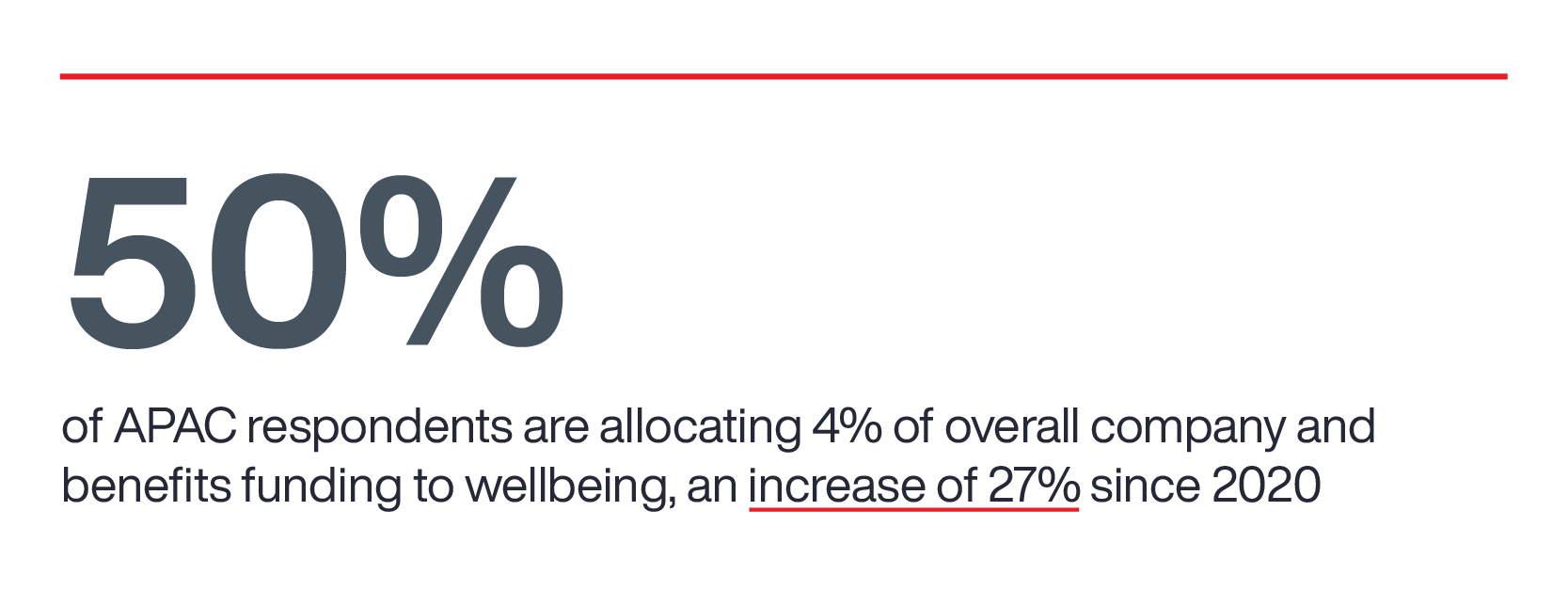Employers Embrace Wellbeing More Than Ever – But is it Working?
The latest data reveals organisations in APAC are increasingly committed to employee wellbeing - but some areas still need more focus.
According to Aon’s 2022-2023 Global Wellbeing Survey employee wellbeing is now a top concern among employers in the Asia Pacific region, with nearly 40% saying it is their number one priority for the coming five years. Yet, when it comes to understanding the impact of wellbeing initiatives, HR and business leaders can struggle to find appropriate measurement frameworks.
Aon’s Associate Director of Wellbeing Solutions, Hellena Wang, says, “Although more APAC companies are prioritising and investing in employee wellbeing compared to 2020 - and there is a shift toward more strategic, integrated strategies – some employers are still introducing initiatives that are ad-hoc or don’t align with the risks and issues impacting their employees. In many cases, we are helping employers prioritise higher-impact activities through better use of quality data.”
Why is Employee Wellbeing Important?
According to the survey, company performance can be enhanced by 11% to 55% by improving overall employee wellbeing, creating a culture and climate of wellbeing, improving the performance of wellbeing initiatives, and by increasing the funding of wellbeing programs.
This could explain why investment in wellbeing has risen in APAC by 27% since 2020, the fastest increase of any region, with 50% of APAC employers who responded to the survey now allocating 4% of their overall company and benefits funding to wellbeing.

The research also shows that employee wellbeing is among the top three human capital strategies for APAC employers, and 85% have a wellbeing strategy in place - a 30% increase from 2020.

Putting wellbeing into practice
The reported effectiveness of wellbeing initiatives is also on the rise, with 46% of APAC respondents rating their company’s programs as ‘exceptional’ or ‘above average’; a 22% increase since 2020.
Employee wellbeing is among the top three people strategies for APAC employers, and 85% having a wellbeing strategy in place - a 30% increase since 2020.

Integrating wellbeing into business and people strategies starts with gathering data, but it needs to be the right data to be effective. “We’re moving to a phase now where wellbeing is becoming a lot more scientific,” says Alan Oates, Aon’s Head of Advisory and Specialty, noting the positive transition away from wellbeing management as a mere box-ticking exercise. “I think we’ve really pivoted towards analysis and accountability.”
Aligning Wellbeing Initiatives with Employees’ Needs
Misalignment often occurs between the primary wellbeing risks impacting employees and initiatives being undertaken by employers.
“It is critical to use data to diagnose the wellbeing risk factors in your population. Only then can you design effective intervention strategies.” Tim Dwyer, Head of Health, Asia Pacific at Aon
According to Bridget Neueur, Aon’s Senior Vice President, Health Transformation Team, “If you have an effective program that is focused on financial wellbeing,” she says, “it is also going to impact someone’s emotional wellbeing. So, it’s worth considering the link between wellbeing pillars instead of simply creating multi-pillar initiatives.”
Fortunately, there are plenty of resources available. However, with so many new wellbeing vendors and programs to choose from, it can be overwhelming for employers to know where to begin - but with the right advice and data, paired with qualitative insights, leaders can more easily design programs that suit their employees’ needs.
Measuring Wellbeing Strategy Effectiveness – and Then What?
To optimise return on investment, improve transparency and reduce the risk and time involved in choosing wellbeing providers, some employers are using external experts like Aon to identify reputable wellbeing vendors and subsequently manage vendor relationships on their behalf. With more ways to maximise efficacy, engagement and productivity, now is the time to review your wellbeing programs and start turning initiatives into strategies with measurable impact.


